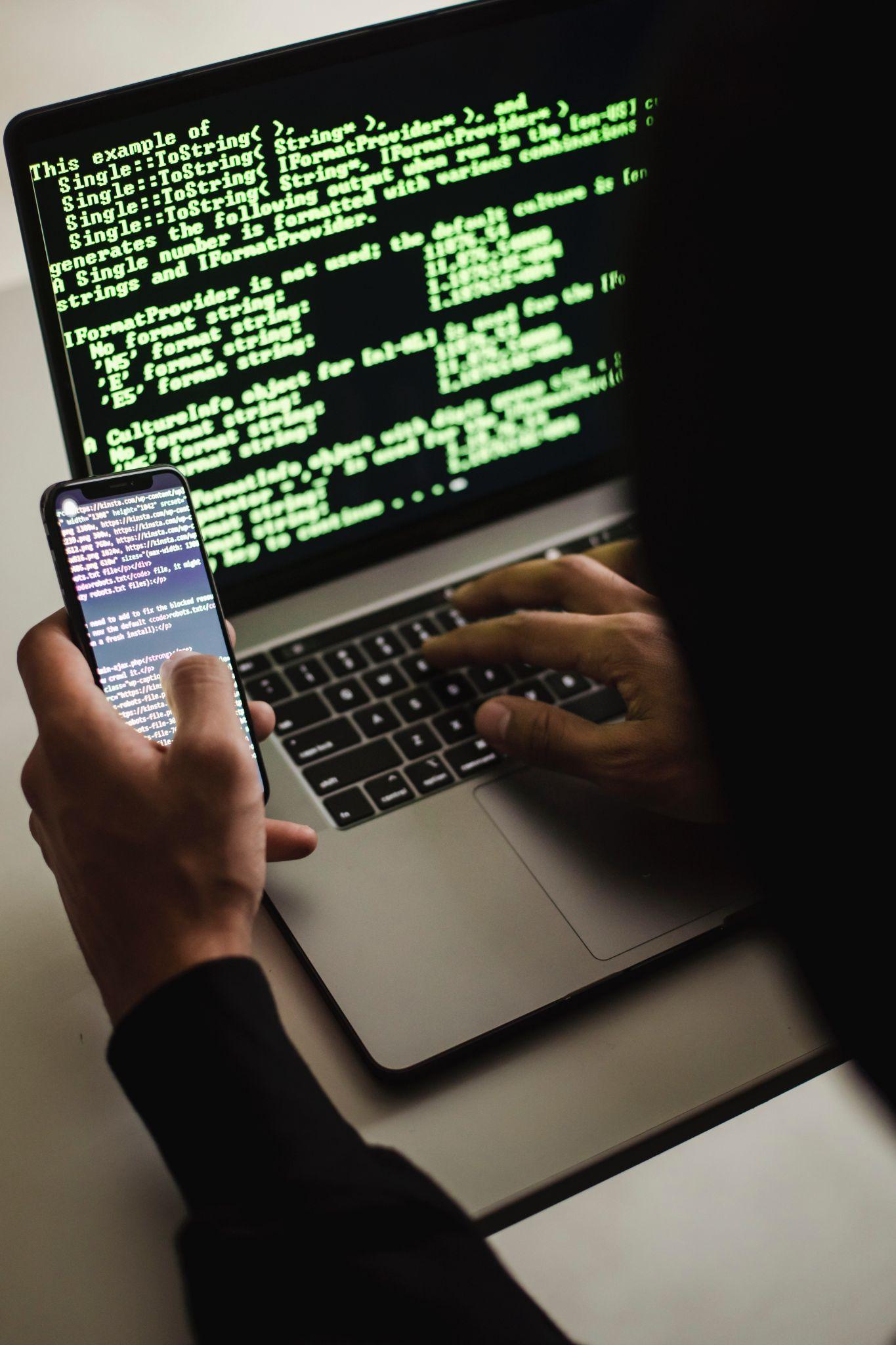The rise in financial cyber attacks is a sign of how this industry has used technology to address many of its issues and is now in the grasp of the same. Numerous financial institutions use big data to enhance their market share and prepare for cyber security threats to the financial sector.
Financial services companies can gain a deeper understanding of their clients’ needs and draw in new ones by utilizing social media, consumer databases, and news feeds.
Due to the inherent hazards of technology, academia is under pressure to produce a larger number of highly qualified security specialists. Although financial institutions are aware that security is a problem, many are unprepared for financial cyber attacks. They have no idea how to counter the increasingly sophisticated strategies used by hackers.
The Need for Cyber Security Management for Financial Services

Financial institutions can achieve successful business outcomes through integrated cybersecurity risk management, including better regulatory alignment, efficient risk management, maintenance of brand equity, and greater shareholder value. Such a plan fosters and preserves confidence in financial institutions and markets to prepare for cyber security threats to the financial sector.
According to our research, cybersecurity begins with people. And a successful strategy should be talent-centric, focus on cultivating a cyber security-aware culture, and involve education and awareness campaigns to spread throughout the company.
Everyone, including corporate executives, risk, compliance, audit experts, operational teams, legal counsel, and others, has a proactive role to play in financial cyber attacks beyond mere awareness. Everyone from the boardroom to the front line has a role to play in cybersecurity risk management.
A successful cybersecurity risk management plan should include the following:
- Strategic and innovative: able to adapt to revolutionary innovation and reap its benefits while being ingrained in strategic decision-making
- Risk-managed and prioritized: driven by enterprise-wide risk prioritization, risk awareness, and well-governed risk alignment
- Intelligent and agile: excellent situational awareness and threat knowledge to deliver quick threat identification and reaction
- Resilient and scalable: minimize disruptions while sustaining business expansion
Rise Of Financial Cyber Attacks In Recent Years
Over the past four years, financial cyber attacks have increased exponentially in the global banking industry. From a sector and geopolitical perspective, this is an even bigger problem. According to external market data, the number of financial cyber-attacks worldwide increased by over 200% in just a year in 2020.
DDoS attacks spiked by 30% in the financial services sector between 2019 and 2020, coinciding with the pandemic’s beginning.
Since banks typically contract with private enterprises or third-party contractors to handle their payment processing, these entities are not always considered financial institutions. However, fraudsters view them similarly because of their connection to private banking information.
The financial sector is vulnerable to financial cyber attacks for various reasons, in addition to the obvious ones. Some have to do with how quickly financial institutions are adopting new technologies and changing; as a result, it prevents financial losses in the current digital era.
This covers the development of digital currencies and traditional banks using more digital channels to compete with fintech firms to meet COVID-19. The regulatory position, the final piece of the jigsaw puzzle, has seen a surge of regulatory reforms affecting financial institutions, particularly in consumer rights and privacy.
Reasons Why Cybersecurity Is Important For The Financial Sector

While physical security of your money is still necessary, digital projection against financial cyber attacks in 2022 is now just as critical. Cybersecurity is essential in the financial services industry for the following reasons:
Prevents Financial Losses

Nothing is worse than discovering that you have been the victim of multiple huge fraudulent charges while trying to transfer money from your account online. When this occurs, a person’s money may typically be immediately retrieved by their bank, but this isn’t always the case with data breaches.
When a bank suffers a data breach that causes the loss of customer funds, it may take some time for those funds to be recovered. Not only does it harm the bank’s reputation, but it also puts the consumer through a great deal of stress. Banks must establish a cyber risk management strategy that safeguards their network against all breach attempts and guarantees the financial security of their clients if they are to stop breaches.
Protect Customer Data

When a customer becomes aware of fraud, it is already too late. The magnitude of the distribution can make it challenging to take back private information that has already been lost or compromised about a customer.
Cybercriminals sell personal data on the black market for use in additional hacking attempts and security breaches. Banks must ensure that adequate cybersecurity measures are in place to safeguard their network and, most crucially, their consumers’ data as they grow their customer base.
Preserves The Reputation Of The Business
Data breaches are a serious problem for businesses because they result in losing client information and confidence. Customers find it challenging to trust the bank when a company’s customer data is hacked.
Inadequate cybersecurity measures cause the majority of data breaches.
Therefore, it is necessary for banks and other financial institutions to have cybersecurity essentials to uphold current security standards and safeguard sensitive information.
Avoid Penalties For Non-Compliance
No bank wants to be penalized for non-compliance since it may be difficult to recover. Compliance standards require banks to implement proper cybersecurity safeguards to guard against cyberattacks. Additionally, any bank that violates the guidelines and falls victim to financial cyber attacks on banks in 2022 must pay FDIC fines.
Cyber Security Threats To The Financial Sector And Their Impact
A cybersecurity plan that considers the unique cybersecurity threats facing the banking sector is necessary to prevail against such improbable odds.
1. Ransomware and Malware
Ransomware is a significant threat to financial services. Attackers use malware to lock victims out of their computers during a ransomware attack. This is known as a “lockout.” To undo the harm, you must pay a ransom to the hackers.
To get victims to pay a ransom, ransomware perpetrators employ a variety of extortion tactics. The most common method to extort ransom money is to post larger portions of illegally stolen sensitive material online.
2. Phishing

Phishing is a type of social engineering that involves deceiving users into disclosing their login information to access a private network.
There are many types of phishing activities happen on daily basis but mobile phishing attacks and Email phishing are the most popular type of phishing, in which victims get emails that appear to be official correspondence.
Any interaction with a phishing email’s malicious links or attachments could result in malware’s installation on the target computer system or the loading of a fake website that collects login information.
3. Web Application Attacks
Web application attacks occur when serious flaws or vulnerabilities allow attackers to access databases directly and publicly to obtain sensitive data. These databases frequently focus on assaults since they often contain valuable information (such as personal and financial details).
Your entire database of sensitive information is seriously in danger of a web application assault if web applications are not secure or if they are open to at least one of the many types of hacking attacks.
4. Bank-Drops
Cybercriminals frequently keep stolen money in fake bank accounts (bank drops) made with stolen customer credentials to conceal their location from law enforcement.
“Fullz’ is the term cybercriminals use to describe the gathering of user credentials needed to generate a bank drop.
A victim’s fullz data could include the following information:
- Full Name
- Address
- DOB
- Drivers License details
- Credit Score
- Social Security details
As more cybercriminals favor cryptocurrency’s improved anonymity over traditional banking methods, the schemes driving traditional bank robberies are likely to adapt to the needs of digital wallets.
Financial organizations should set security controls specifically for the credentials often needed to open new accounts to counter this cyber security threat to the financial sector.
5. Distributed Denial of Service (DDoS) Attacks
A DDoS attack, also known as a distributed denial-of-service attack, is an internet service attack that is regrettably remarkably simple to launch and difficult to defend against if your cybersecurity team lacks good DDoS protection technologies.
DDoS assaults are conducted using networks of computers linked to the Internet.
These networks are made up of computers and other devices, such as Internet of Things (IoT) devices that have been infected with malware, enabling an attacker to manage them remotely. These particular gadgets are known as bots (or zombies), and a botnet is a collection of bots.
Once a botnet has been created, the attacker can control an attack by giving each bot remote commands.
6. State-sponsored Attacks

DDoS assaults are conducted using networks of computers linked to the Internet.
Attacks carried out by states are frequently very sophisticated, ranging from supply chain hacks to sophisticated botnets used to execute DDoS attacks.
In contrast to threat actors who are just driven by profit, state-sponsored threat actors may be politically motivated. As a result, their objectives for the attack may not always be obvious and may vary over time.
Cyber Attacks On Banks in 2022
Banks are increasing their security budgets this year to fight against an increase in disruptive assaults, ransomware, and “island-hopping”—a term used to describe the process of weakening a company’s cyber defenses by targeting its exposed partner network rather than by launching a direct attack.
- According to the VMware report, 63% of financial institutions saw an increase in destructive attacks, a 17% increase from the previous year.
- According to Banking Journal, organizations in the banking sector reported 703 cyber-attack attempts per week in Q4 2021, a 53% increase over the same time the year before. According to some statistics, a cyberattack occurs every 10 seconds on a global scale.
- The financial crimes investigative division of the US Treasury Department (FinCEN) reported finding almost $5.2 billion in outgoing bitcoin transactions over a six-month period in 2017 that may have been connected to ransomware payments.
Solutions To Improve Your Cybersecurity Efforts
Your business’s overall health depends on the security of your data. Trade secrets, financial information, and personnel data must all be protected. Your reputation and finances could be harmed if compromised. You can take certain actions to prevent becoming a headline.
● Continuously Monitor All System
With approximately 90% of security resources going toward firewall technology, many firms are focusing on protecting the walls around their data. However, firewalls have countless potential workarounds, including through clients, partners, and staff. These individuals can all get beyond external cyber security and abuse sensitive data. Because of this, you must ensure that your security efforts are concentrated on the data rather than just the perimeter.
● Regular Audits

An organization’s security is examined during a cybersecurity audit to protect it from cyberattacks. Before any hacking effort or network compromise is caused by a cyberattack conducted by cybercriminals, a cybersecurity audit helps discover the gaps and flaws that need to be corrected.
Cyber security auditors must be thoroughly aware of both the business or IT environment and technical security. Suppose a cyber security audit is properly conducted. In that case, it should provide organizations with confidence in the cyber security mechanisms in place and offer suggestions for strengthening the organization’s security posture.
● Choose The Right Security Solution
Since sensitive data is what we want to safeguard, you must be aware of a few crucial facts about it to be able to recognize and respond to security threats quickly. You must be aware of both the location and the kind of your sensitive data. You need to know who has access to that data and whether their job function depends on it; if not, you can withdraw their access. Additionally, you must recognize abnormalities and respond with automated threat models to understand how people interact with the data and how permissions are changing.
This is possible with Jumpstart Security Platform from a single, flexible, and cost-effective interface. Schedule a demo with one of our engineers immediately if you’d like to learn more about how Jumpstart can help you increase data security and prevent breaches.
Safeguard Your Business Against Financial Cyber Attacks in 2022 With Jumpstart Cybersecurity Solutions
Data breaches affected around 118 million people alone in the first half of 2021. Statistics on data breaches this year were far higher than they were last year. Taking preventative action is the best approach to guarantee your organization’s security.
Jumpstart Security gives companies that don’t have the funds to employ and train their IT support staff access to advanced cyber security and data loss prevention.
Jumpstart Security’s services are sold on a subscription basis, with charges per user or device. Assisting service providers in incorporating safe onboarding procedures. By utilizing the network effect of business-to-business value chains, they provide quick and inexpensive ways to obtain and use tools, resources, and advice.
Jumpstart Security provides cybersecurity for small businesses against malware, ransomware, phishing, automatic infected device identification, and monitoring and controlling of any suspicious activity.
This makes Jumpstart Security a top-tier, enterprise-grade solution that gives every small business the perfect balance of cyber security and ease of use. Visit our site for Securing Small Businesses to learn more about how Jumpstart Security can protect your small business.
Conclusion
The financial sector is under constant financial cyber attacks from cybercriminals, coming second after healthcare in the hierarchy of most cybersecurity threats.
Regulators carefully monitor cyber-events in this industry and are prepared to impose ever-tougher laws and restrictions.
These elements combine to create what might be referred to as the ideal environment for cyber dangers. This industry should be commended for offering a degree of security that most customers find tolerable under the current circumstances. Yet at what price?
Many worry that some financial service firms may ultimately be unable to afford the underlying costs of compliance and resiliency. If this occurs, there may be less competition in the market as only the biggest companies will remain. In the long run, this is bad news for consumers.
This market is ready for innovation that will go beyond the limitations of the status quo and offer a more secure way to conduct financial transactions and combat cyber security threats to the financial sector.
